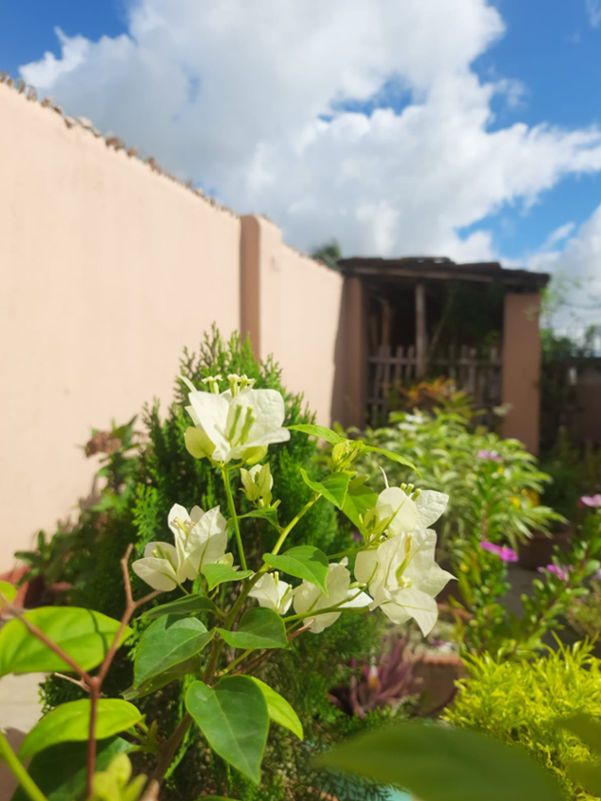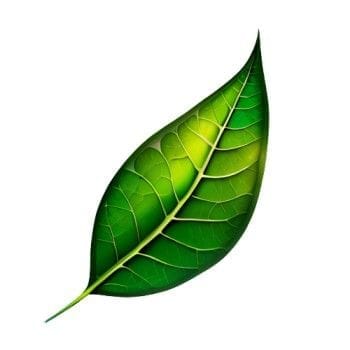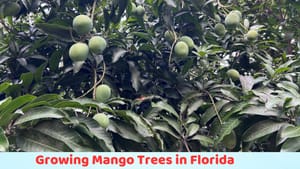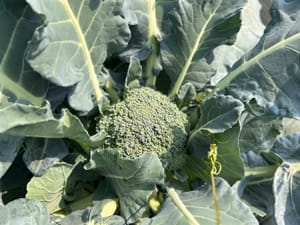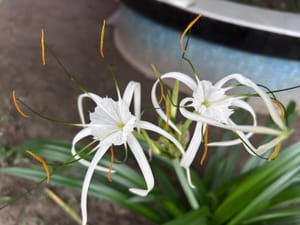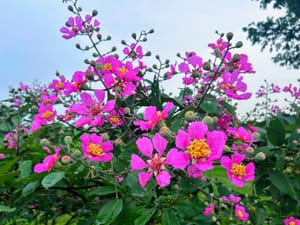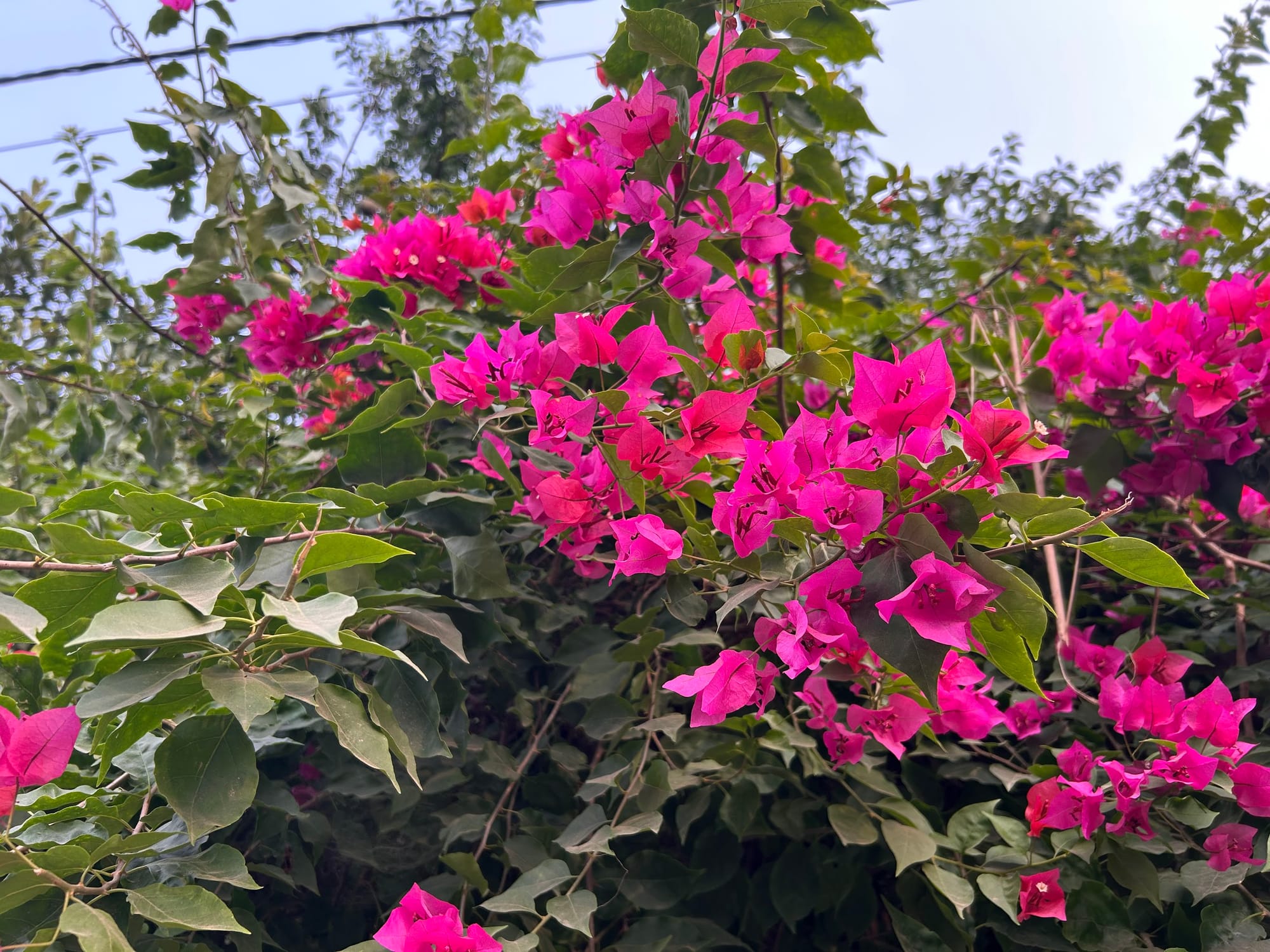
Bougainvillea performs well in tropical and subtropical climates, making it a good choice for Florida gardens. I have grown several varieties of Bougainvillea, and I have included all my experiences growing it in Florida in this article. I hope it will help Florida gardeners grow bougainvillea.
I was confused when I first went to the nursery to bring a bougainvillea plant as there were so many varieties. The colors were amazing.
During traveling in 2017 I first realized we can grow bougainvillea to create beautiful landscapes. Just take a look at this picture:
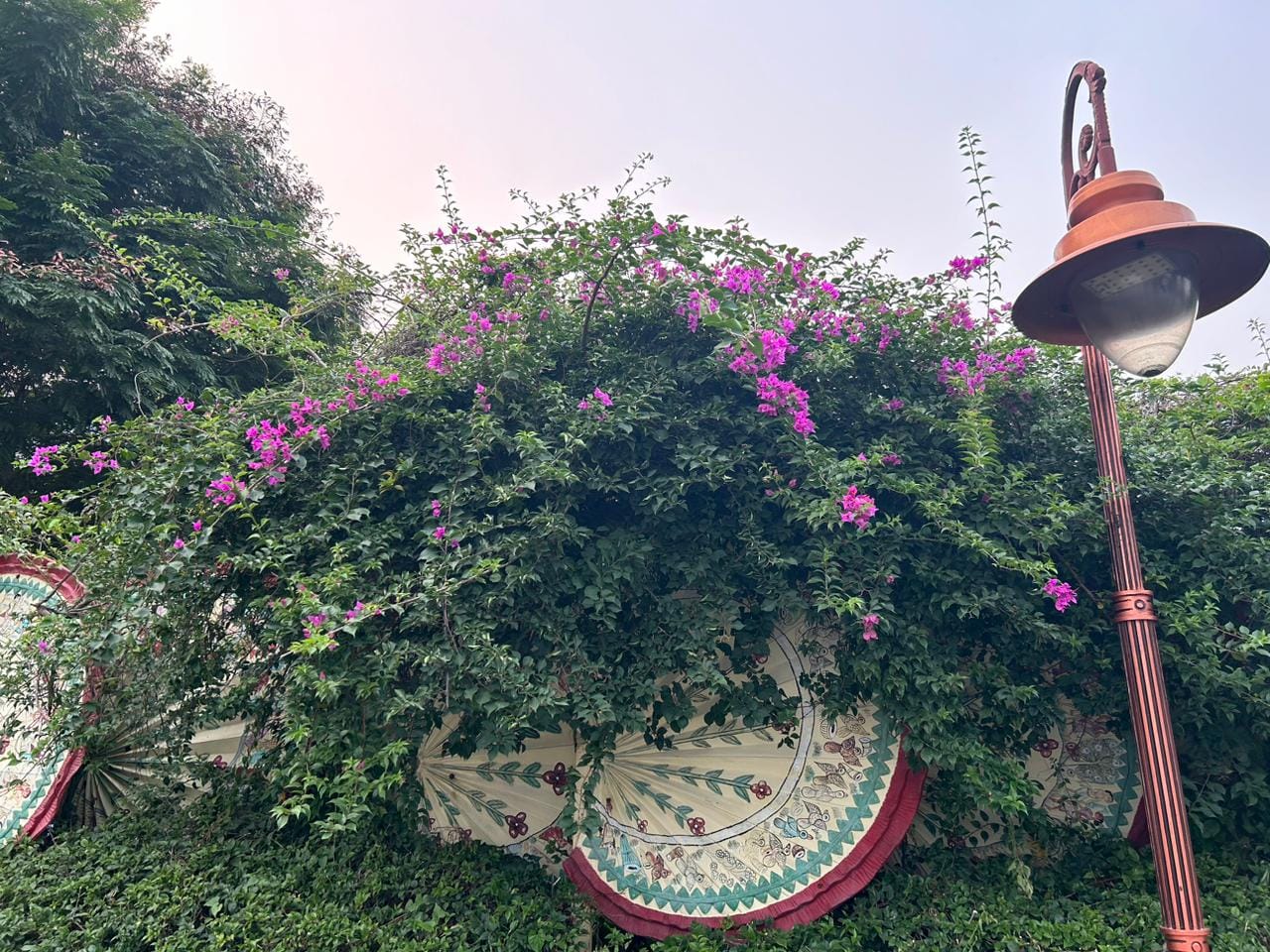
Selecting the right variety of Bougainvillea to grow
There are many species or varieties of this plant available all over the world. But very few can be grown easily in Florida, and believe me, those will make your garden beautiful.
Friendly note: Plant it on the ground and avoid using a pot for it. (If you use a pot make sure you do hard pruning)
Some major species of Bougainvillea that can be grown easily in Florida
- Bougainvillea spectabilis: This is the most common and widely recognized Bougainvillea species. It features brilliant magenta or purple bracts and can grow as a vine or a shrub. It's a great choice for adding vibrant color to your garden.
- Bougainvillea glabra: Also known as the "lesser Bougainvillea," this variety produces smaller, more compact bracts and has a neater growth habit. It comes in a range of colors, including shades of pink, purple, and red.
- Bougainvillea 'Barbara Karst': 'Barbara Karst' is a popular choice in Florida due to its deep pink to red bracts. It's a vigorous grower, making it perfect for adding a burst of color to fences, walls, or trellises.
- Bougainvillea 'Miami Pink': As the name suggests, this variety offers stunning pink bracts and is well-suited for Miami's tropical climate. It's a vigorous grower and can quickly cover structures with its colorful display.
- Bougainvillea 'California Gold': If you prefer golden hues, 'California Gold' is the variety for you. Its bright yellow bracts bring a touch of sunshine to your garden.
The above-mentioned varieties can be grown almost in the same way. So you can choose any of these.
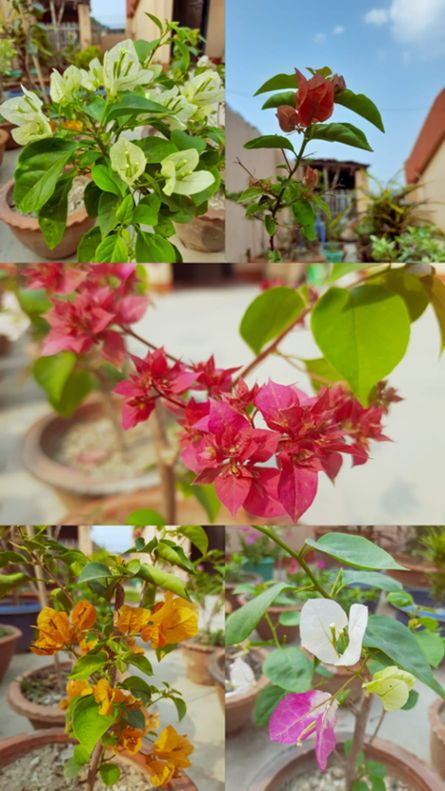
Growing Tips for Bougainvillea in Florida
| Tips | Description |
|---|---|
| 1. Variety Selection | Choose Bougainvillea varieties that are well-suited to Florida's climate and your garden's space. |
| 2. Sunlight | Provide at least 6 hours of direct sunlight per day for optimal growth and flowering. |
| 3. Soil Preparation | Make sure the soil is well-draining with compost in Florida's sandy soils. |
| 4. Watering | Water deeply but infrequently, allowing the top inch of soil to dry between waterings. |
| 5. Fertilizing | Use a balanced, slow-release fertilizer during the growing season (spring and summer). (I personally don't recommend using chemical fertilizers at all. |
| 6. Pruning | Prune after each flowering cycle. |
| 7. Pest and Disease Control | Monitor for pests like aphids and caterpillars, and use appropriate treatments as needed. |
| 8. Winter Protection | Protect plants from occasional winter freezes by covering or moving potted Bougainvillea indoors. |
| 9. Training and Support | Train Bougainvillea onto trellises, fences, or walls for desired growth direction and shape. |
Note: If you look at the flowers carefully and closely you can find that the Bougainvillea flowers are actually modified leaves. The name of those petals-like things is Bracts. This flower is also known as the Paper Flower. Because the flower looks like made of paper.

Preparing Soil
This is the first step for planting every plant. Try to use neutral soil or slightly acidic soil. I usually add sulfur to my soil to maintain the pH level of my soil. You can also add some organic matter to do the same. Bougainvillea loves well-draining soil.
- Selecting the Planting Location: Choose a location that receives full sun for at least 6 hours a day. Bougainvilleas love sunlight and need it to produce vibrant blooms. Make your plan ready to arrange proper support like wall, fence etc.
- Clear the Area: Remove any existing weeds, grass, or debris from the planting area. This helps prevent competition for nutrients and water.
- Test the Soil: Perform a soil test to determine its pH level and nutrient content. Bougainvilleas prefer slightly acidic to neutral soil with a pH level between 5.5 and 7.0. If your soil is too acidic or alkaline, you may need to amend it to adjust the pH. (You can skip this step as it is a little bit complicated for home gardeners)
- Amending the Soil: Bougainvilleas prefer well-draining soil. Florida's sandy soils may drain too quickly, so it's essential to amend them to improve water retention. You can do this by adding organic matter such as compost or well-rotted manure. Work the organic matter into the soil to a depth of about 12 to 18 inches.
- Improving Fertility: Bougainvilleas benefit from fertile soil. You can add a balanced, slow-release fertilizer to the planting area according to the package instructions. Choose a fertilizer with a nutrient ratio like 10-10-10 or 14-14-14. Incorporate the fertilizer into the soil during the preparation process.
Planting the Bougainvillea
Create a hole first after selecting the ideal planting space. Make sure the top of the root ball is level with the ground's surface while you plant it.
Remove the plant from the container that you get from the nursery and then plant it in the hole. Fill the rest of the hole with extracted soil and make it a little bit tighter. Then apply water.
Spread a natural layer of organic mulch ( I add wood chips) around the plant's base to retain moisture, stabilize soil temperature, and inhibit weed growth. To prevent potential rot, make sure the mulch is situated a few inches away from the plant's stem.
Watering
In the first couple of weeks of the plantation, water it regularly and thoroughly (Your goal is to keep the rootball moist always). Once established well, water only when the soil is completely dry out.
Note: If the soil is not well drained, in the first 3 weeks your bougainvillea can face root rot and it will die.
Yellow leaves on Bougainvillea might be a symptom of overwatering and underwatering both.
Pruning
The best time to prune Bougainvillea in Florida is during the late winter or early spring, typically in February or March, when the plant is mostly dormant.
Use sharp and clean pruning shears or loppers to make clean cuts.
Basic Pruning Techniques: Remove dead or damaged branches first. Cut these back to the main stem or the point where they join a healthy branch.
Next, prune for shape and size. It can become unruly if left unpruned, so you can trim it to the desired shape. However, avoid cutting too much at once, as this can stress the plant.
Trim back overly long or leggy growth to encourage bushier growth.
Bougainvillea produces flowers on new growth. To encourage more blooms, prune the tips of the branches after each flowering cycle.
If your Bougainvillea is very dense, you can selectively thin it out by removing some of the interior branches. This improves air circulation and reduces the risk of pests and diseases.
It can tolerate hard pruning if needed to control its size or rejuvenate an older plant. You can cut it back severely, even to a few feet from the ground. However, this should be done in early spring to allow for regrowth during the growing season.
This year, I have applied hard pruning to one of my Bougainvilleas. It was raining at that time and within a week new leaves started growing. Here is the picture:
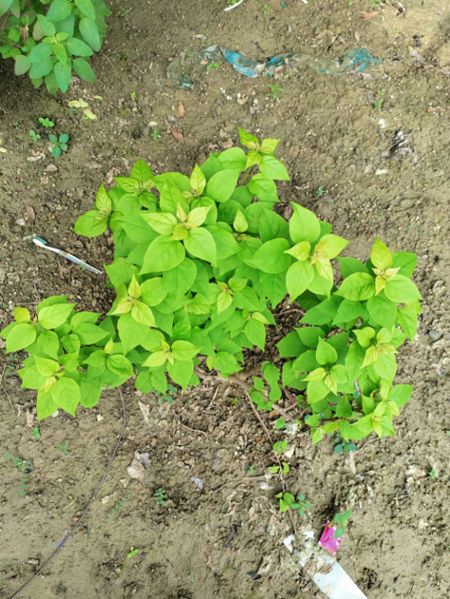
Remember that Bougainvillea is a vigorous grower, so regular maintenance pruning is usually necessary to keep it in check and encourage abundant flowering. Pruning practices may vary depending on the specific variety of Bougainvillea you have. I am just sharing my experience here.
What to do if you are not getting any flower
If you are not getting flowers on your Bougainvillea, you can reduce fertilizer usage.
Propagation of Bougainvillea
Propagating Bougainvillea in Florida can be done through several methods, including cuttings, seeds, and air layering. If you ask me what's the best method among these, I will suggest going with cuttings. Cuttings propagation has a good success rate.
Here's how you can propagate Bougainvillea:
Propagation from Cuttings:
- Select a healthy parent plant: Choose a mature plant with vibrant and disease-free growth. Try to do cuttings during the rainy season.
- Prepare the cuttings: Use sharp, clean pruning shears to take 6 to 8-inch cuttings from the tips of the plant's branches.
- Remove leaves: Trim off most of the leaves from the cutting and only leave a few at the top. This reduces water loss through transpiration.
- Dip in rooting hormone: Dip the cut end of each cutting in a rooting hormone powder (You can also use honey) to enhance root development.
- Plant the cuttings: Place the cuttings into a well-draining potting mix or a blend of sand and perlite, ensuring they are buried at a depth of 4 inches.
- Provide ideal conditions: Position the pot containing the cuttings in a warm, well-lit area with indirect sunlight. Maintain the soil's moisture consistently without overwatering.
- Transplanting: Once the cuttings have developed roots (usually within a few weeks to a few months), you can transplant them into larger pots or directly into the garden.
Propagation from Seeds:
You can grow Bougainvillea from seeds, but I will not recommend it as it has a lower success rate with a longer first blooming time.
- Collect seeds from mature Bougainvillea flowers.
- Plant the seeds in a potting mix and spray water on them regularly.
- Germination may take several weeks to months, and not all seeds may be viable.
Propagation by Air Layering:
- Air layering is another method to propagate Bougainvillea.
- Select a healthy branch, make a small cut or scrape off a ring of bark, and then wrap the wounded area with moist sphagnum moss and plastic wrap.
- Roots will form in the wounded area. So the new root can be planted to create a new plant from it.
